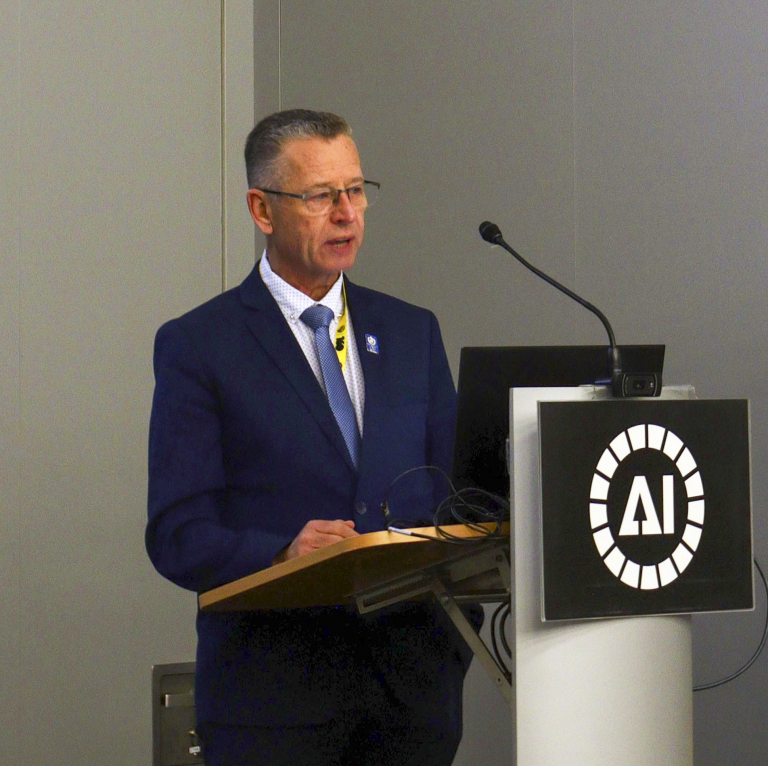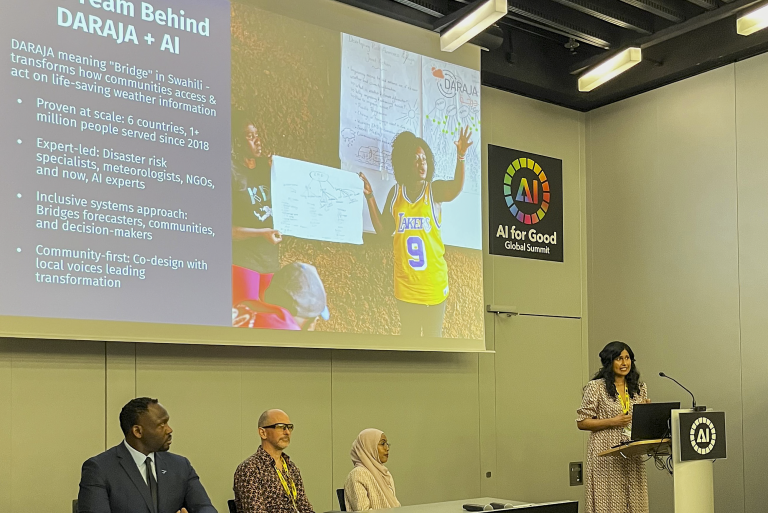At the AI for Good Global Summit 2025 in Geneva, the "AI Innovation for Early Warnings for All" workshop-co-led by WMO under the global EW4All initiative-was more than another checkpoint. It was a milestone. A moment to see how innovation is translating into action, and how artificial intelligence can help deliver on the promise that by 2027, everyone on Earth will be protected by early warning systems.
The workshop brought together practitioners, technologists, and policy leaders. Not to celebrate what's possible-but to advance what's already working.

Session 1: AI can help close the gaps that cost lives
The first session spotlighted insights from the EW4All AI Sub-Group. Representatives from each pillar (UNDRR, WMO, ITU, and IFRC) shared their perspectives on AI, especially gaps where AI offers promise to leap country capacity forward. Erica Allis, Chief, Partner Engagement and Coordination Division Disaster Risk Reduction, MHEWS Office and Public Services Branch, Services Department, WMO, noted the importance of improving modelling and lowering barriers to entry so all users can effectively leverage complex, diverse scientific datasets and products. Pilot projects were also introduced by UN agencies, the private sector, and academia.

Session 2: Innovations arise where there are local needs
The second session put the spotlight on four real-world solutions developed through the AI for EW4All Innovation Challenge:
- Bibliotechies built a tool to help responders act before floods, not after.
- DARAJA is using AI to improve access to emergency alerts for communities in Sudan and Ethiopia.
- Ignitia is helping people in vulnerable areas get ultra-local forecasts.
- DESTSAJ is ensuring warnings in Bangladesh are not only sent but also seen, understood and acted upon.
A key message that clearly emerged from the discussion is that innovation occurs where local needs are acknowledged. These bottom-up innovations are key to bridging global ambition with local impact.

Session 3: Action means integrating AI into the systems that serve people
The final session showcased real-time applications from partners, including Microsoft and Google. These weren't theoretical demos-they were operational systems: mapping digital blind spots, forecasting floods with AI and satellite data, and scaling access to warnings through integrated risk communication platforms. A recurring theme in the discussion was the need for local partnerships with mandated agencies as AI models require extensive data for training and validation. It was stressed that these efforts should be paired with capacity development to ensure sustainability.
The Takeaway
WMO, its Members and partners are leading a global campaign to ensure early warnings protect everyone, everywhere. And AI is proving to be a pivotal tool -- when used responsibly, designed for inclusion, and embedded in scalable systems.
The message was clear. Whether conventional or AI-driven, early warning systems must be people-centred. Trust and partnership are essential to their success.
Crucially, AI is not replacing people or expertise. The best systems are those built and run by experts who use AI wisely and understand the risks, context and stakes. Human judgment remains irreplaceable. When used appropriately, AI can accelerate progress toward the ambitious goals of EW4All. This workshop marked real momentum toward 2027-a reminder that the work is urgent, the tools are advancing, and the time to act is now.






